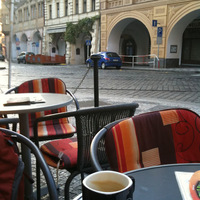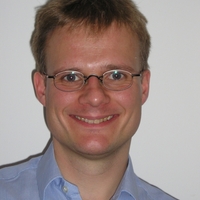Papers by Eugene Mcgovern

Land Science
CO2 sequestered by peatlands is accounted for and offset against national emissions. Observationa... more CO2 sequestered by peatlands is accounted for and offset against national emissions. Observational and modelling studies are used to estimate emission factors that dictate the rate of CO2 emissions or removals from peatlands accounted for within the Landuse and landuse change including forestry (LULUCF) sector and often use simple Tier 1 emission factors found in the IPCC (1996) guidebook. However, the current estimates are predominately based off peatland surface fluxes measured using either chamber methods or eddy covariance techniques. These methods do not focus on sub-surface conditions while this information may prove useful in understanding efflux rates and conditions that influence them. To help assess the potential significance of subsurface dynamics in overall CO2 efflux rates from peatlands this study proposes to review the literature dealing with subsurface conditions. The review found that the production of CO2 in the sub-surface layers was often uncoupled from emissions...
Journal of Coastal Conservation
Ecohydrology & Hydrobiology
The Global Positioning System (GPS) has been operational since the early 1990's. The system is co... more The Global Positioning System (GPS) has been operational since the early 1990's. The system is constantly being upgraded while the Russian GLONASS and the European GALILEO systems will complement GPS in the next few years. Generically, these satellite-based positioning systems are referred to as Global Navigation Satellite Systems (GNSS). Previously, a part-time evening course in GPS was run at the Dublin Institute of Technology (DIT) by the Department of Spatial Information Sciences (DSIS). This is now being replaced by two e-learning modules in GNSS designed for distance-based, on-line delivery. The first module covers GNSS for navigation and Geographical Information Systems (GIS) applications and the second module will cover GNSS for high-accuracy applications such as surveying and geophysics. This paper describes the development of the first GNSS module.

Inted2011 Proceedings, 2011
The Geomatics industry is a highly specialised field incorporating advanced technical instrumenta... more The Geomatics industry is a highly specialised field incorporating advanced technical instrumentation and complex measurement systems which form part of local, national and international Spatial Information Systems. As spatial information forms the basis for many aspects of construction, architecture, planning and development, the knowledge and skills required by the qualified Geomatics professional are varied. The professional surveyor must attain the required academic standard and satisfy professional criteria. The BSc in Geomatics in the Dublin Institute of Technology (DIT) is the only programme in Ireland producing Geomatics professionals. It is accredited by a number of professional bodies including the Society of Chartered Surveyors (SCS) and the Royal Institution of Chartered Surveyors (RICS) and is designed to produce graduates who have academic integrity coupled with real-life problem solving skills thus servicing societal needs. The subject area 'Geodetic Surveying' is taught in each year of the Geomatics Degree Programme and traditionally brings together a number of core surveying principles and practical problem solving skills which are reflected in the summative and formative module assessments. In this exercise the formative assessment element of module SSPL3005 (Geodetic Surveying 3), which is a 5 ECTS (European Credit Transfer System) module delivered to third year students, focused on an industrial simulation exercise as a means of meeting the demands of relevant stakeholders, viz. Students, Academic standards, Professional Bodies and Industry. This simulation exercise emulates the TV show 'The Apprentice' whereby students, operating in teams, had to solve a practical survey problem and present, and defend, their findings on camera before a panel consisting of two course tutors and a chartered surveyor who is the director of a large survey practice. This paper outlines the pedagogical approach of using industrial simulation for survey education and evaluates the methodology employed and the outcomes achieved. It also highlights the challenges in aligning academic curricula and assessment with the professional competencies required by industry.
Architecture and Mathematics from Antiquity to the Future, 2014

Geoinformatics FCE CTU, 2011
The design and evaluation of virtual learning environments for construction and surveying student... more The design and evaluation of virtual learning environments for construction and surveying students is presented in this paper; by combining virtual learning environment and on-site student surveys to model and replicate practice in the architectural heritage sector. The Virtual Learning Environment is enhanced with real live survey projects whereby students collect the data to build virtual historic buildings from onsite surveys using advanced survey equipment. The survey data is modelled in HBIM; Historic Building Information Modelling (HBIM) is currently being developed as a virtual learning tool for construction and surveying students in the Dublin Institute of Technology. HBIM, is a novel solution whereby interactive parametric objects representing architectural elements are constructed from historic data, these elements, including detail behind the scan surface are accurately mapped onto a laser or image based survey. The architectural elements are scripted using a Geometric D...
Teaching and training construction and surveying students using computer simulations of buildings... more Teaching and training construction and surveying students using computer simulations of buildings although recently developed is not new. In the case of this project a novel aspect is introduced through applying advanced recording and building modelling techniques developed in the Faculty of the Built Environment in the Dublin Institute of Technology. In summary this learning software uses parametric objects representing

Structural Survey, 2009
Historic Building Information Modelling (HBIM) is a novel prototype library of parametric objects... more Historic Building Information Modelling (HBIM) is a novel prototype library of parametric objects, based on historic architectural data and a system of cross platform programmes for mapping parametric objects onto point cloud and image survey data. The HBIM process begins with remote collection of survey data using a terrestrial laser scanner combined with digital photo modelling. The next stage involves the design and construction of a parametric library of objects, which are based on the manuscripts ranging from Vitruvius to 18th century architectural pattern books. In building parametric objects, the problem of file format and exchange of data has been overcome within the BIM ArchiCAD software platform by using geometric descriptive language (GDL). The plotting of parametric objects onto the laser scan surveys as building components to create or form the entire building is the final stage in the reverse engineering process. The final HBIM product is the creation of full 3D models including detail behind the object's surface concerning its methods of construction and material make-up. The resultant HBIM can automatically create cut sections, details and schedules in addition to the orthographic projections and 3D models (wire frame or textured) for both the analysis and conservation of historic objects, structures and environments. Ó
Resources, Conservation and Recycling, 2000
Production (industrial) bogs are those from which peat is extracted, for fuel and horticultural p... more Production (industrial) bogs are those from which peat is extracted, for fuel and horticultural purposes, using highly mechanised methods. The possible applications of Landsat Thematic Mapper (TM) satellite imagery to a production bog complex in Ireland were studied. Three distinct phases were identified in the life cycle of these bogs, i.e. pre-production, in-production and post-production. Within these categories, 13 land

ISPRS Journal of Photogrammetry and Remote Sensing, 2013
ABSTRACT a b s t r a c t Historic Building Information Modelling (HBIM) is a novel prototype libr... more ABSTRACT a b s t r a c t Historic Building Information Modelling (HBIM) is a novel prototype library of parametric objects, based on historic architectural data and a system of cross platform programmes for mapping parametric objects onto point cloud and image survey data. The HBIM process begins with remote collection of survey data using a terrestrial laser scanner combined with digital photo modelling. The next stage involves the design and construction of a parametric library of objects, which are based on the manuscripts ranging from Vitruvius to 18th century architectural pattern books. In building parametric objects, the problem of file format and exchange of data has been overcome within the BIM ArchiCAD software platform by using geometric descriptive language (GDL). The plotting of parametric objects onto the laser scan sur-veys as building components to create or form the entire building is the final stage in the reverse engi-neering process. The final HBIM product is the creation of full 3D models including detail behind the object's surface concerning its methods of construction and material make-up. The resultant HBIM can automatically create cut sections, details and schedules in addition to the orthographic projections and 3D models (wire frame or textured) for both the analysis and conservation of historic objects, structures and environments. Ó 2012 International Society for Photogrammetry and Remote Sensing, Inc. (ISPRS) Published by Elsevier B.V. All rights reserved.

Eds Arnold, D Niccolucci F Chalmers A …, 2007
The product of a laser scan survey of a building or artefact is a point cloud which defines the g... more The product of a laser scan survey of a building or artefact is a point cloud which defines the geometry of the object, and when combined with image data the object edges and material textures can be identified. The point cloud survey is useful for visualisation and also as a record of the 3D surfaces of an object. Where conservation or restoration work is to be carried out on the object conventional orthographic or 3D survey drawings are required. Survey drawings can be created by mapping vectors on to the point cloud or textured point cloud. This is a complex process as the data size of the point cloud is usually very large; also mapping in 3D space onto a point cloud is intricate due to difficulties in locating correct object planes and the detection of object edges. These problems have been overcome to a large extent using software platforms and plug inns which interface between CAD and point cloud processing software programmes. A method to improve automation of vector mapping by plotting parametric vector objects on to the point cloud is examined in this paper. This study is based on a laser scan and image-based survey of 17th century classical architecture in Dublin. The parametric objects are created from the geometry of the point cloud correlated with the historic design principles of classical architecture and then directly mapped on to the point cloud survey. The laser survey can only record the surface of the object; construction details behind the surface can be detected from historic data, thus producing a full 3D and orthographic vector survey of an object or building.

Land Science
CO2 sequestered by peatlands is accounted for and offset against national emissions. Observationa... more CO2 sequestered by peatlands is accounted for and offset against national emissions. Observational and modelling studies are used to estimate emission factors that dictate the rate of CO2 emissions or removals from peatlands accounted for within the Landuse and landuse change including forestry (LULUCF) sector and often use simple Tier 1 emission factors found in the IPCC (1996) guidebook. However, the current estimates are predominately based off peatland surface fluxes measured using either chamber methods or eddy covariance techniques. These methods do not focus on sub-surface conditions while this information may prove useful in understanding efflux rates and conditions that influence them. To help assess the potential significance of subsurface dynamics in overall CO2 efflux rates from peatlands this study proposes to review the literature dealing with subsurface conditions. The review found that the production of CO2 in the sub-surface layers was often uncoupled from emissions...
Journal of Coastal Conservation
Ecohydrology & Hydrobiology
The Global Positioning System (GPS) has been operational since the early 1990's. The system is co... more The Global Positioning System (GPS) has been operational since the early 1990's. The system is constantly being upgraded while the Russian GLONASS and the European GALILEO systems will complement GPS in the next few years. Generically, these satellite-based positioning systems are referred to as Global Navigation Satellite Systems (GNSS). Previously, a part-time evening course in GPS was run at the Dublin Institute of Technology (DIT) by the Department of Spatial Information Sciences (DSIS). This is now being replaced by two e-learning modules in GNSS designed for distance-based, on-line delivery. The first module covers GNSS for navigation and Geographical Information Systems (GIS) applications and the second module will cover GNSS for high-accuracy applications such as surveying and geophysics. This paper describes the development of the first GNSS module.

Inted2011 Proceedings, 2011
The Geomatics industry is a highly specialised field incorporating advanced technical instrumenta... more The Geomatics industry is a highly specialised field incorporating advanced technical instrumentation and complex measurement systems which form part of local, national and international Spatial Information Systems. As spatial information forms the basis for many aspects of construction, architecture, planning and development, the knowledge and skills required by the qualified Geomatics professional are varied. The professional surveyor must attain the required academic standard and satisfy professional criteria. The BSc in Geomatics in the Dublin Institute of Technology (DIT) is the only programme in Ireland producing Geomatics professionals. It is accredited by a number of professional bodies including the Society of Chartered Surveyors (SCS) and the Royal Institution of Chartered Surveyors (RICS) and is designed to produce graduates who have academic integrity coupled with real-life problem solving skills thus servicing societal needs. The subject area 'Geodetic Surveying' is taught in each year of the Geomatics Degree Programme and traditionally brings together a number of core surveying principles and practical problem solving skills which are reflected in the summative and formative module assessments. In this exercise the formative assessment element of module SSPL3005 (Geodetic Surveying 3), which is a 5 ECTS (European Credit Transfer System) module delivered to third year students, focused on an industrial simulation exercise as a means of meeting the demands of relevant stakeholders, viz. Students, Academic standards, Professional Bodies and Industry. This simulation exercise emulates the TV show 'The Apprentice' whereby students, operating in teams, had to solve a practical survey problem and present, and defend, their findings on camera before a panel consisting of two course tutors and a chartered surveyor who is the director of a large survey practice. This paper outlines the pedagogical approach of using industrial simulation for survey education and evaluates the methodology employed and the outcomes achieved. It also highlights the challenges in aligning academic curricula and assessment with the professional competencies required by industry.
Architecture and Mathematics from Antiquity to the Future, 2014






Uploads
Papers by Eugene Mcgovern